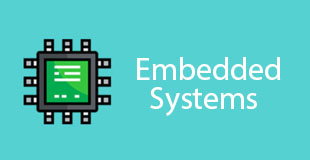
Embedded systems
Description
Embedded systems is a course where you can have an ample knowledge on processors and controllers
By going through this course you can get a bag full of knowledge on controllers practically. In this course
You will have hands-on experience of different sensors and implementation of sensors with controllers
Embedded Systems Course Content
Introduction to Processors & Controllers
- what is an embedded system
- what is a processor
- what is a controller
- types of processors
- types of controllers
- difference between processor and controller
Introduction to Ardunio Hardware
- different types of atmega
- different types of arduino boards
- different types of memory elements
- uno board specifications
- uno input output pins
- uno analog and digital pins
Introduction to ARM Processor
- What Is Arm?
- What Do You Mean By Risc
- What Is Cisc
- Difference Between Risc And Cisc
- Arm Types And Rpi Introduction
Introduction to Embedded C and its Coding
- what is programming
- why programming in embedded systems
- what is embedded c
- embedded c programming structure
- embedded c library and functions
- embedded c loops and binary operators
Introduction to Sensors
- ir sensors
- ultrasonic sensors
- rf id,seven segment display
- motors
- l293d
- ldr sensors
- led , relay
Implementation of Sensors with UNO
- line follower robot
- obstalle detection
- different led patterns
- seven segments display
- rfid toll gate implementation
- street light
- distance measurement
Courses Features
-
LanguageEnglish
-
Lectures1
-
CertificationYes
-
Project5 Minor + 1 Major
-
Duration64 hrs + 36 hrs
-
Max-Students20


